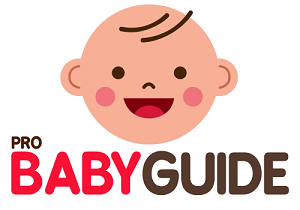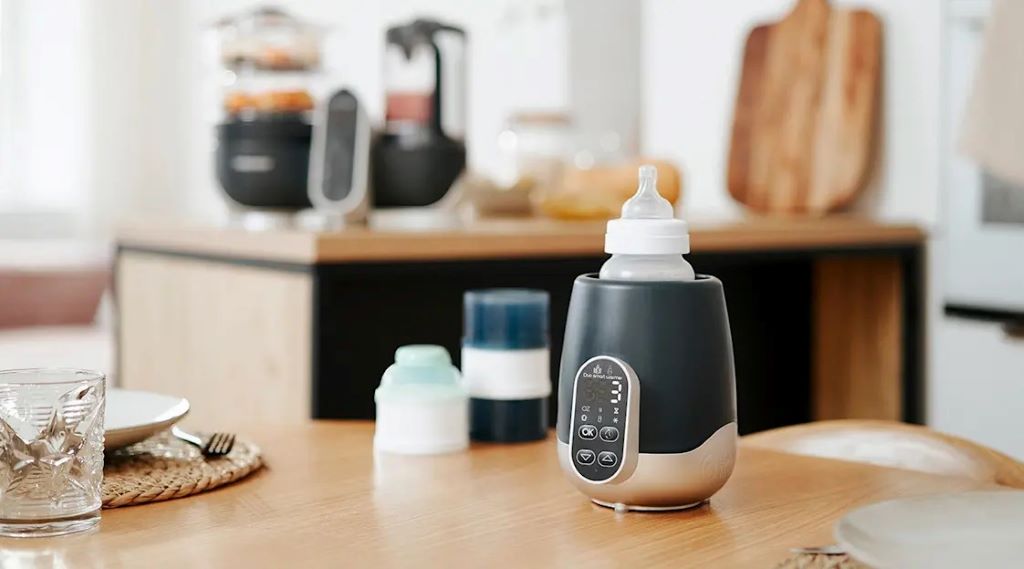Hey there, new mama! So, you’ve joined the club of those who opted for a silicone breast pump. Welcome! These handy little things can be a lifesaver, but let’s be honest, they can seem a bit mysterious at first. Don’t worry, I’m here to help you figure it out. Think of me as your silicone breast pump guru (without the weird chanting and incense…unless you’re into that, then maybe a little incense). 😉
Why Silicone Pumps Rock
First, let’s talk about why these things are so great. Unlike those electric pumps that sound like a robot milking a cow (sorry, not sorry!), silicone pumps are super quiet. Want to pump in the middle of a meeting? Go for it! No one will be the wiser. Plus, they’re small and portable. Throw one in your bag and you’re good to go. No cords, no batteries, no fuss.
And the best part? They mimic your baby’s natural sucking motion. This means more milk, mama! According to a study published in the International Journal of Environmental Research and Public Health, silicone pumps can increase milk production in some women. Pretty cool, right?
Getting Started with Your Silicone Pump
Alright, let’s get down to business. Here’s the lowdown on how to use these awesome little pumps:
1. Cleanliness is Key!
Before you even think about touching your pump, wash your hands with soap and water. You don’t want any germs getting into your precious milk. Then, sterilize the pump. Most silicone pumps can be boiled in water for a few minutes or tossed in the dishwasher (top rack only, please!).
2. Prep Those Boobs!
A warm shower or compress can help get your milk flowing. You can also try some gentle massage. Think of it as a spa day for your breasts!
3. Get a Good Suction
This is where the magic happens. Squeeze the base of the pump to create suction. Then, center it over your nipple, making sure you have a good seal. It shouldn’t hurt, so if it does, reposition the pump. Think of it like Goldilocks trying out the bears’ beds – not too tight, not too loose, but just right!
4. Let the Pump Do Its Thing
Now, sit back and relax. Let the pump do the work. You can gently massage your breasts to help things along. Some women find that leaning forward helps too. Experiment and see what works best for you.
5. Storing Your Liquid Gold
Once you’re done pumping, carefully remove the pump and pour your milk into a storage bag or bottle. Don’t forget to label it with the date! Breast milk can be stored in the fridge for a few days or in the freezer for several months.
Tips and Tricks for Silicone Pump Pros
Want to become a silicone pump ninja? Here are a few insider tips:
- Use it while breastfeeding: Did you know you can use your silicone pump on one breast while your baby nurses on the other? It’s like a two-for-one deal! This can help catch those precious letdown reflexes and maximize your milk collection.
- Try different positions: Don’t be afraid to experiment with different positions to see what works best for you. Some women prefer to lie down, while others find sitting up works better. It’s all about finding what’s comfortable for you.
- Keep it cool: Storing your pump in the fridge can help create even stronger suction. Just make sure to warm it up a bit before using it. No one wants a cold surprise on their breast!
- Be patient: It might take a few tries to get the hang of it. Don’t get discouraged if you don’t get a lot of milk at first. Keep practicing and you’ll be a pro in no time.
Troubleshooting Time
Having a bit of trouble with your silicone pump? Let’s tackle some common issues:
- Not getting much milk? Make sure you have a good seal and try massaging your breast while pumping. Remember, relaxation is key! Stress can hinder your milk flow.
- Pump keep falling off? Try leaning forward or applying a little bit of nipple balm to help it stick. You can also try a different size pump.
- Pump is uncomfortable? Make sure you’re not squeezing it too tightly. Remember, it shouldn’t hurt. If it does, reposition the pump or try a different size.
Taking Care of Your Pump
Your silicone pump is your new best friend, so you want to take good care of it. Here’s how:
- Wash it after every use: This is non-negotiable! Wash your pump with warm soapy water and sterilize it regularly.
- Don’t stretch it out: Silicone is pretty durable, but it can stretch out over time. Avoid overfilling the pump or pulling it too hard.
- Store it properly: When you’re not using it, store your pump in a clean, dry place. You can even keep it in the fridge to help maintain its shape.

Silicone Pumps vs. Electric Pumps: The Showdown
You might be wondering how silicone pumps stack up against their electric counterparts. Here’s a quick comparison:
Silicone Pumps:
- Pros: Quiet, portable, affordable, mimics baby’s sucking motion.
- Cons: May not be as efficient as electric pumps for some women, and requires manual effort.
Electric Pumps:
- Pros: Can be more efficient, hands-free, adjustable settings.
- Cons: Noisy, expensive, requires batteries or electricity.
Ultimately, the best pump for you depends on your individual needs and preferences. If you’re looking for a quiet, portable, and affordable option, a silicone pump might be the perfect choice. But an electric pump might be a better fit if you need a more powerful pump for frequent use.

Silicone Breast Pump Pros and Cons:
You’re right to weigh the pros and cons! Choosing the right breast pump is a personal decision, and silicone pumps have their own set of advantages and disadvantages. Here’s a breakdown to help you decide if it’s the right fit for you:
Pros:
- Quiet as a mouse: Seriously, these things are practically silent. Pump in a library, a meeting, or even while your baby is sleeping without disturbing anyone.
- Super portable: No cords, batteries, or bulky motors. They’re small and lightweight, making them perfect for travel or on-the-go pumping.
- Easy peasy: No complicated settings or assembly required. Just squeeze, attach, and relax.
- Gentle and natural: The suction mimics a baby’s natural sucking motion, which can be more comfortable and may even help increase milk production.
- Budget-friendly: Silicone pumps are generally much cheaper than electric pumps, making them a great option for moms on a budget.
- Discreet: They’re small and inconspicuous, so you can use them without feeling like you’re hooked up to a machine.
- Easy to clean: Most silicone pumps are dishwasher safe (top rack!) or can be sterilized by boiling in water.
- Great for collecting letdowns: They’re perfect for catching milk that leaks from the opposite breast while you’re nursing.
Cons:
- May not be as efficient: While they’re great for catching letdowns and occasional pumping, they may not be as powerful or efficient as electric pumps, especially if you need to pump frequently or have a strong let-down.
- Requires manual effort: You need to squeeze the pump to create suction, which can get tiring if you’re pumping for long periods.
- Can be tricky to master: It might take some practice to get the hang of positioning the pump and maintaining suction.
- Capacity limitations: Silicone pumps typically hold less milk than electric pumps or bottles, so you may need to empty them more frequently.
- Not ideal for exclusive pumping: If you’re exclusively pumping, an electric pump will likely be more efficient and less tiring.
- Durability: While silicone is durable, it can be prone to tearing or losing its shape over time.
Ultimately, the best way to decide if a silicone breast pump is right for you is to consider your individual needs and pumping goals. If you’re looking for a quiet, portable, and affordable option for occasional pumping or catching letdown, a silicone pump could be a great choice. But an electric pump might be a better fit if you need a more powerful pump for frequent or exclusive pumping.

The Bottom Line
Silicone breast pumps are a fantastic option for many moms. They’re easy to use, convenient, and effective. By following these tips and tricks, you’ll be a silicone pump pro in no time! Remember, every mom’s breastfeeding journey is different. Don’t be afraid to experiment and find what works best for you and your little one. Happy pumping!
Here are some frequently asked questions about using silicone breast pumps:
1. How do I clean my silicone breast pump?
Wash your pump with warm soapy water after each use. Then, sterilize it by boiling it for a few minutes or placing it in the dishwasher (top rack only).
2. How do I get a good suction?
Squeeze the base of the pump to create suction, then center it over your nipple, making sure you have a good seal. It shouldn’t hurt, so if it does, reposition the pump.
3. How long should I pump?
Pump for about 15-20 minutes, or until your milk flow starts to slow down.
4. What should I do if I’m not getting much milk?
Make sure you have a good seal and try massaging your breast while pumping. Remember, relaxation is key! Stress can hinder your milk flow.
5. Can I use my silicone pump while breastfeeding?
Yes! You can use your silicone pump on one breast while your baby nurses on the other. This can help catch those precious letdown reflexes and maximize your milk collection.
6. How do I store my breast milk?
Pour your milk into a storage bag or bottle and label it with the date. Breast milk can be stored in the fridge for a few days or in the freezer for several months.
7. How do I know if my silicone pump is the right size?
The pump should fit snugly over your nipple without pinching or pinching. If the pump is too big or too small, it won’t create a good seal and you won’t be able to get as much milk.
8. What are the pros and cons of silicone pumps compared to electric pumps?
Silicone pumps are quieter, more portable, and more affordable than electric pumps. They also mimic the baby’s sucking motion, which can help increase milk production. However, they may not be as efficient as electric pumps for some women and require manual effort.
9. Can I use my silicone pump with a breast pump adapter?
Yes, you can use a breast pump adapter to connect your silicone pump to a bottle or storage bag. This can be helpful if you want to pump and store your milk in the same container.
10. Where can I buy a silicone breast pump?
Silicone breast pumps can be found at many stores that sell baby products, as well as online retailers.
I hope these FAQs help! If you have any other questions, please feel free to ask.





